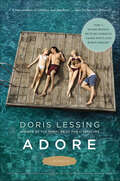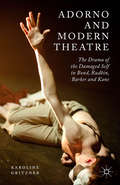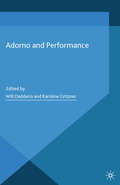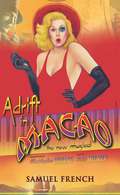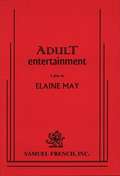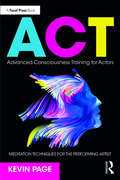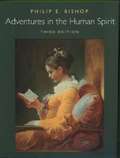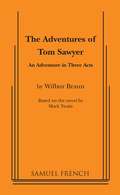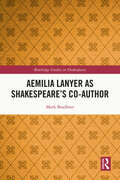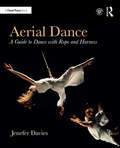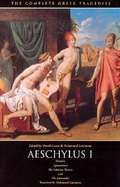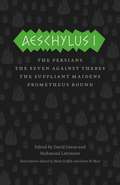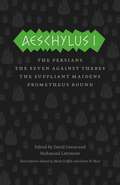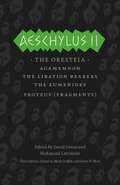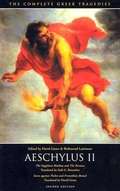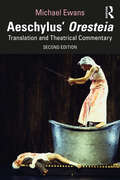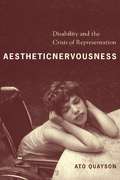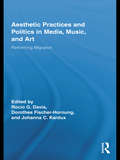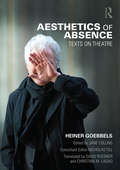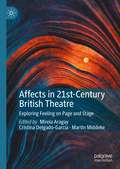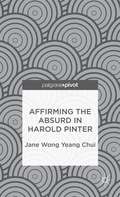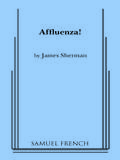- Table View
- List View
Adore: A Novella
by Doris Lessing“A keen sociological eye for class and ideology; an understanding of the contradictory impulses of the human heart; an ability to conjure a place, a mood and a time through seemingly matter-of-fact descriptions.” — Michiko Kakutani, New York TimesShocking, intimate, often uncomfortably honest, Adore reaffirms Doris Lessing’s unrivaled ability to capture the truth of the human condition.Roz and Lil have been best friends since childhood. But their bond stretches beyond familiar bounds when these middle-aged mothers fall in love with each other's teenage sons—taboo-shattering passions that last for years, until the women end them, vowing to have a respectable old age.
Adorno and Modern Theatre: The Drama of the Damaged Self in Bond, Rudkin, Barker and Kane
by K. GritznerAdorno and Modern Theatre explores the drama of Edward Bond, David Rudkin, Howard Barker and Sarah Kane in the context of the work of leading philosopher Theodor W. Adorno (1903-1969). The book engages with key principles of Adorno's aesthetic theory and cultural critique and examines their influence on a generation of seminal post-war dramatists.
Adorno and Performance (Performance Philosophy)
by Will Daddario Karoline GritznerAdorno and Performance offers the first comprehensive examination of the vital role of performance within the philosophy of Theodor W. Adorno. Capacious in its ramifications for contemporary life, the term 'performance' here unlocks Adorno's dialectical thought process, which aimed at overcoming the stultifying uniformity of instrumental reason.
Adrienne Kennedy Reader
by Adrienne KennedyIntroduction by Werner SollorsAdrienne Kennedy has been a force in American theatre since the early 1960s, influencing generations of playwrights with her hauntingly fragmentary lyrical dramas. Exploring the violence racism visits upon people&’s lives, Kennedy&’s plays express poetic alienation, transcending the particulars of character and plot through ritualistic repetition and radical structural experimentation. Frequently produced, read, and taught, they continue to hold a significant place among the most exciting dramas of the past fifty years. This first comprehensive collection of her most important works traces the development of Kennedy&’s unique theatrical oeuvre from her Obie-winning Funnyhouse of a Negro (1964) through significant later works such as A Movie Star Has to Star in Black and White (1976), Ohio State Murders (1992), and June and Jean in Concert, for which she won an Obie in 1996. The entire contents of Kennedy&’s groundbreaking collections In One Act and The Alexander Plays are included, as is her earliest work "Because of the King of France" and the play An Evening with Dead Essex (1972). More recent prose writings "Secret Paragraphs about My Brother," "A Letter to Flowers," and "Sisters Etta and Ella" are fascinating refractions of the themes and motifs of her dramatic works, even while they explore new material on teaching and writing. An introduction by Werner Sollors provides a valuable overview of Kennedy&’s career and the trajectory of her literary development. Adrienne Kennedy (b. 1931) is a three-time Obie-award winning playwright whose works have been widely performed and anthologized. Among her many honors are the American Academy of Arts and Letters award and the Guggenheim fellowship. In 1995-6, the Signature Theatre Company dedicated its entire season to presenting her work. She has been commissioned to write works for the Public Theater, Jerome Robbins, the Royal Court Theatre, the Mark Taper Forum, and Juilliard, and she has been a visiting professor at Yale, Princeton, Brown, the University of California at Berkeley, and Harvard. She lives in New York City.
Adrift in Macao
by Christopher DurangFull Length, Musical / 4m, 3f /Unit Sets Nominated for a Drama Desk Award for Best Music Set in 1952 in Macao, China, ADRIFT IN MACAO is a loving parody of film noir movies. Everyone that comes to Macao is waiting for something, and though none of them know exactly what that is, they hang around to find out. The characters include your film noir standards, like Laureena, the curvacious blonde, who luckily bumps into Rick Shaw, the cynical surf and turf casino owner her first night in town. She ends up getting a job singing in his night club - perhaps for no reason other than the fact that she looks great in a slinky dress. And don't forget about Mitch, the American who has just been framed for murder by the mysterious villain McGuffin. With songs and quips, puns and farcical shenanigans, this musical parody is bound to please audiences of all ages. "And there are of course those songs... Melnick demonstrates an affinity for melody and old-fashioned showmanship that link him to his grandfather, Richard Rodgers..."- Matthew Murray, Talkin' Broadway.com "... with a drop-dead funny book and shamefully silly lyrics by Christopher Durang and lethally catchy music by Peter Melnick. A Drift In Macao lovingly parodies the Hollywood film noir classics of the 1940's and 50's..." - Michael Dale, Broadwayworld.com
Adult Entertainment
by Elaine MayComedy / 3m, 3f / Unit Set There is a cloud over porn queen Heidi the 'Ho's usually cheery cable TV show. Her guests are wearing armbands to mourn the passing of their employer and mentor, a legendary porn filmmaker. Tired of working for others, this motley group of adult video veterans decides to write and shoot their own extravaganza, an "art" film. The script doesn't live up to their expectations so they bring in a new writer, one who insists they read the classics to prepare for their roles. Unexpected ideas develop as the hilarity escalates bringing the play to a raucous and riotous conclusion.
Advanced Consciousness Training for Actors: Meditation Techniques for the Performing Artist
by Kevin PageAdvanced Consciousness Training for Actors: Meditation Techniques for the Performing Artist explores theories and techniques for deepening the individual actor’s capacity to concentrate and focus attention. Going well beyond the common exercises found in actor training programs, these practices utilize consciousness expanding "technologies" derived from both Eastern and Western traditions of meditation and mindfulness training as well as more recent discoveries from the fields of psychology and neuroscience. This book reviews the scientific literature of consciousness studies and mindfulness research to discover techniques for focusing attention, expanding self-awareness, and increasing levels of mental concentration; all foundational skills of the performing artist in any medium.
Adventures In The Human Spirit (Third Edition)
by Philip E. BishopExceptionally student-friendly, extensively illustrated, and engagingly thought-provoking, this one-volume historical survey of the humanities is accessible--and inviting--to readers with little background in the arts and humanities. Carefully balanced among the major arts, philosophy, and religion and finely focused on selected principal events, styles, movements, and figures, it brings the past to life by including authentic documents from daily life, comparative global perspectives, and examples from literature, philosophy, music--including the contributions of women and minority artists. For individuals waiting to discover the humanities' rich connections to their own
Adventures of Tom Sawyer
by Mark TwainAdventure in three acts based on the novel by Mark Twain. Great for young audiences.
Aemilia Lanyer as Shakespeare’s Co-Author (Routledge Studies in Shakespeare)
by Mark BradbeerThis book presents original material which indicates that Aemilia Lanyer – female writer, feminist, and Shakespeare contemporary – is Shakespeare’s hidden and arguably most significant co-author. Once dismissed as the mere paramour of Shakespeare’s patron, Lord Hunsdon, she is demonstrated to be a most articulate forerunner of #MeToo fury. Building on previous research into the authorship of Shakespeare’s works, Bradbeer offers evidence in the form of three case studies which signal Aemilia’s collaboration with Shakespeare. The first case study matches the works of "George Wilkins" – who is currently credited as the co-author of the feminist Shakespeare play Pericles (1608) – with Aemilia Lanyer’s writing style, education, feminism and knowledge of Lord Hunsdon’s secret sexual life. The second case-study recognizes Titus Andronicus (1594), a play containing the characters Aemilius and Bassianus, to be a revision of the suppressed play Titus and Vespasian (1592), as authored by the unmarried pregnant Aemilia Bassano, as she then was. Lastly, it is argued that Shakespeare’s clowns, Bottom, Launce, Malvolio, Dromio, Dogberry, Jaques, and Moth, arise in her deeply personal war with the misogynist Thomas Nashe. Each case study reveals new aspects of Lanyer’s feminist activism and involvement in Shakespeare’s work, and allows for a deeper analysis and appreciation of the plays. This research will prove provocative to students and scholars of Shakespeare studies, English literature, literary history, and gender studies.
Aerial Dance: A Guide to Dance with Rope and Harness
by Jenefer DaviesAerial Dance: A Guide to Dance with Rope and Harness provides an introduction for the beginning aerialist. It covers rigging, equipment, advice on optimal conditioning, and a step-by-step guide to technique, including anatomical references, space and time considerations, and elements of force when working with and against gravity. Specific movements and choreography are framed anatomically and together reflect the pattern and order of an aerial technique class. Challenges inherent to this type of dancing are discussed, as well as wellness instruction and methods of altering these techniques for intermediate and advanced dancing. A companion website hosts video that corresponds with the technique and phrasing in the book.
Aeschylus I: Agamemnon, The Libation Bearers, The Eumenides (The Complete Greek Tragedies #1)
by Aeschylus David Grene Richmond Lattimore"These authoritative translations consign all other complete collections to the wastebasket."--Robert Brustein, The New Republic. "This is it. No qualifications. Go out and buy it everybody."--Kenneth Rexroth, The Nation. "The translations deliberately avoid the highly wrought and affectedly poetic; their idiom is contemporary.... They have life and speed and suppleness of phrase."--Times Education Supplement. "These translations belong to our time. A keen poetic sensibility repeatedly quickens them; and without this inner fire the most academically flawless rendering is dead."--Warren D. Anderson, American Oxonian. "The critical commentaries and the versions themselves... are fresh, unpretentious, above all, functional."--Commonwealth. "Grene is one of the great translators."--Conor Cruise O'Brien, London Sunday Times. "Richmond Lattimore is that rara avis in our age, the classical scholar who is at the same time an accomplished poet."--Dudley Fitts, New York Times Book Review.
Aeschylus I: The Complete Greek Tragedies, Third Edition
by David Grene Richmond Lattimore"Aeschylus I" contains The Persians, translated by Seth Benardete; The Seven Against Thebes, translated by David Grene; The Suppliant Maidens, translated by Seth Benardete; and Prometheus Bound, translated by David Grene. Sixty years ago, the University of Chicago Press undertook a momentous project: a new translation of the Greek tragedies that would be the ultimate resource for teachers, students, and readers. They succeeded. Under the expert management of eminent classicists David Grene and Richmond Lattimore, those translations combined accuracy, poetic immediacy, and clarity of presentation to render the surviving masterpieces of Aeschylus, Sophocles, and Euripides in an English so lively and compelling that they remain the standard translations. Today, Chicago is taking pains to ensure that our Greek tragedies remain the leading English-language versions throughout the twenty-first century. In this highly anticipated third edition, Mark Griffith and Glenn W. Most have carefully updated the translations to bring them even closer to the ancient Greek while retaining the vibrancy for which our English versions are famous. This edition also includes brand-new translations of Euripides "Medea," "The Children of Heracles," "Andromache," and "Iphigenia among the Taurians," fragments of lost plays by Aeschylus, and the surviving portion of Sophocles s satyr-drama "The Trackers. " New introductions for each play offer essential information about its first production, plot, and reception in antiquity and beyond. In addition, each volume includes an introduction to the life and work of its tragedian, as well as notes addressing textual uncertainties and a glossary of names and places mentioned in the plays. In addition to the new content, the volumes have been reorganized both within and between volumes to reflect the most up-to-date scholarship on the order in which the plays were originally written. The result is a set of handsome paperbacks destined to introduce new generations of readers to these foundational works of Western drama, art, and life. "
Aeschylus I: The Persians, The Seven Against Thebes, The Suppliant Maidens, Prometheus Bound (The Complete Greek Tragedies)
by AeschylusThe third edition of this volume includes newly revised, authoritative and compelling translations of four timeless works by the Ancient Greek tragedian.Aeschylus I contains “The Persians,” translated by Seth Benardete; “The Seven Against Thebes,” translated by David Grene; “The Suppliant Maidens,” translated by Seth Benardete; and “Prometheus Bound,” translated by David Grene. For this edition, Mark Griffith and Glenn W. Most have carefully updated these translations to bring them even closer to the ancient Greek while retaining the vibrancy for which the renowned University of Chicago Press series is famous. This edition also includes brand-new translations of Euripides’ Medea, The Children of Heracles, Andromache, and Iphigenia among the Taurians, fragments of lost plays by Aeschylus, and the surviving portion of Sophocles’s satyr-drama The Trackers. New introductions for each play offer essential information about its first production, plot, and reception in antiquity and beyond. In addition, each volume includes an introduction to the life and work of its tragedian, as well as notes addressing textual uncertainties and a glossary of names and places mentioned in the plays. The entire series has also been reorganized both within and between volumes to reflect the most up-to-date scholarship on the order in which the plays were originally written.
Aeschylus II: The Oresteia (The Complete Greek Tragedies)
by AeschylusThis updated translation of the Oresteia trilogy and fragments of the satyr play Proteus includes an extensive historical and critical introduction. In the third edition of The Complete Greek Tragedies, Mark Griffith and Glenn W. Most have carefully updated the translations to bring them even closer to the ancient Greek while retaining their vibrancy for which the Grene and Lattimore versions are famous. New introductions for each play offer essential information about its first production, plot, and reception in antiquity and beyond.Each volume also includes an introduction to the life and work of the tragedian and an explanation of how the plays were first staged, as well as notes addressing textual uncertainties and a glossary of names and places mentioned in the plays. The result is a series of lively and authoritative translations offering a comprehensive introduction to these foundational works of Western drama.
Aeschylus II: The Suppliant Maidens, The Persians, Seven against Thebes, Promethus Bound (The Complete Greek Tragedies #2) (2nd edition)
by Aeschylus David Grene Richmond LattimoreThis volume contains the other four plays of Aeschylus not included in Richmond Lattimore's version of the Oresteia. With these two volumes a complete English Aeschylus is before the reader.
Aeschylus' Oresteia: Translation and Theatrical Commentary
by Michael EwansThis is a fully revised new edition of Michael Ewans’ 1995 English translation of the Oresteia, taking into account the extensive work published on the trilogy in recent years.Accompanying this lucid, accurate and actable translation is a substantial introduction, outlining the festival setting of the plays, the original performance conditions and performance style, the form and meaning of the trilogy, the issues surrounding the act of translation, and finally a survey of some major productions since 1980. The text itself is a thoroughly competitive translation into modern English verse, now significantly revised in the light of recent scholarship on the text. It is followed by a theatrical commentary on each scene and chorus, providing unique insights into how the plays might have been staged in ancient Athens and how they can be staged today. The book also includes notes on the translation, two glossaries of names and Greek terms, selected further reading, and a chronology of Aeschylus’ life and times.Aeschylus’ Oresteia: Translation and Theatrical Commentary is the most comprehensive English edition of Aeschylus’ masterpiece, and this new edition fully meets the needs of teachers, students and practitioners working on the trilogy as well as those interested in ancient Greek drama and literature more broadly.
Aesthetic Nervousness: Disability and the Crisis of Representation
by Ato QuaysonFocusing primarily on the work of Samuel Beckett, Toni Morrison, Wole Soyinka, and J. M. Coetzee, Ato Quayson launches a thoroughly cross-cultural, interdisciplinary study of the representation of physical disability. Quayson suggests that the subliminal unease and moral panic invoked by the disabled is refracted within the structures of literature and literary discourse itself, a crisis he terms "aesthetic nervousness." The disabled reminds the able-bodied that the body is provisional and temporary and that normality is wrapped up in certain social frameworks. Quayson expands his argument by turning to Greek and Yoruba writings, African American and postcolonial literature, depictions of deformed characters in early modern England and the plays of Shakespeare, and children's films, among other texts. He considers how disability affects interpersonal relationships and forces the character and the reader to take an ethical standpoint, much like representations of violence, pain, and the sacred. The disabled are also used to represent social suffering, inadvertently obscuring their true hardships.
Aesthetic Practices and Politics in Media, Music, and Art: Performing Migration
by Rocío G. DavisThis volume analyzes innovative forms of media and music (art installations, television commercials, photography, films, songs, telenovelas) to examine the performance of migration in contemporary culture. Though migration studies and media studies are ostensibly different fields, this transnational collection of essays addresses how their interconnection has shaped our understanding of the paradigms through which we think about migration, ethnicity, nation, and the transnational. Cultural representations intervene in collective beliefs. Art and media clearly influence the ways the experience of migration is articulated and recalled, intervening in individual perceptions as well as public policy. To understand the connection between migration and diverse media, the authors examine how migration is represented in film, television, music, and art, but also how media shape the ways in which host country and homeland are imagined. Among the topics considered are new mediated forms for representing migration, widening the perspective on the ways these representations may be analyzed; readings of enactments of memory in trans- and inter-disciplinary ways; and discussions of globalization and transnationalism, inviting us to rethink traditional borders in respect to migration, nation states, as well as disciplines.
Aesthetics of Absence: Texts on Theatre
by Heiner GoebbelsAesthetics of Absence presents a significant challenge to the many embedded assumptions and hierarchical structures that have become ‘naturalised’ in western theatre production. This is the first English translation of a new collection of writings and lectures by Heiner Goebbels, the renowned German theatre director, composer and teacher. These writings map Goebbels’ engagement with ‘Aesthetics of Absence’ through his own experience at the forefront of innovative music-theatre and performance making. In this volume, Goebbels reflects on works created over a period of more than 20 years staged throughout the world; introduces some of his key artistic influences, including Robert Wilson and Jean-Luc Godard; discusses the work of his students and ex-students, the collective Rimini Protokoll; and sets out the case for a radical rethinking of theatre and performance education. He gives us a rare insight into the rehearsal process of critically acclaimed works such as Eraritjaritjaka and Stifters Dinge, explaining in meticulous detail the way he weaves an eclectic range of references from fine art, theatre, literature, politics, anthropology, contemporary and classical music, jazz and folk, into his multi-textured music-theatre compositions. As an artist who is prepared to share his research and demystify the processes through which his own works come into being, as a teacher with a coherent pedagogical strategy for educating the next generation of theatre-makers, in this volume, Goebbels brings together practice, research and scholarship.
Affecting Grace
by Kenneth C. CalhoonAffecting Grace examines the importance of Shakespeare's poetry and plays within German literature and thought after 1750 - including its relationship to German classicism, which favoured unreflected ease over theatricality. Kenneth S. Calhoon examines this tension against an extensive backdrop that includes a number of canonical German authors - Goethe, Schiller, Herder, Lessing, von Kleist, and Nietzsche - as well as the advent of Meissen porcelain, the painting of Bernardo Bellotto and Francesco Guardi, and aspects of German styles of architecture.Extending from Shakespeare's The Merchant of Venice (c. 1597) to Kleist's The Broken Jug (1806), this study turns on the paradox that the German literary world had begun to embrace Shakespeare just as it was firming up the broad but pronounced anti-Baroque sensibility found pivotally in Lessing's critical and dramatic works. Through these investigations, Calhoon illuminates the deep cultural changes that fundamentally affected Germany's literary and artistic traditions.
Affects in 21st-Century British Theatre: Exploring Feeling on Page and Stage
by Martin Middeke Mireia Aragay Cristina Delgado-GarcíaThis book explores the various manifestations of affects in British theatre of the 21st century. The introduction gives a concise survey of existing and emerging theoretical and research trends and argues in favour of a capacious understanding of affects that mediates between more autonomous and more social approaches. The twelve chapters in the collection investigate major works in Britain by playwrights and theatre makers including Mojisola Adebayo, Mike Bartlett, Alice Birch, Caryl Churchill, Tim Crouch and Andy Smith, Rachel De-lahay, Reginald Edmund, James Fritz, David Greig, Idris Goodwin, Zinnie Harris, Kieran Hurley, Lucy Kirkwood, Anders Lustgarten, Yolanda Mercy, Anthony Neilson, Lucy Prebble, Sh!t Theatre, Penelope Skinner, Stef Smith, Kae Tempest and debbie tucker green. The interpretations identify significant areas of tension as they relate affects to the fields of cognition, politics and hope. In this, the chapters uncover interrelations of thought, intention and empathy; they reveal the nexus between identities, institutions and ideology; and, finally, they explore how theatre can accomplish the transition from a sense of crisis to utopian visions.
Affirming the Absurd in Harold Pinter
by Jane Wong Yeang ChuiUsing Martin Esslin's invention - the Theatre of the Absurd - to examine Pinter's works, Wong brings the complexities and intricacies of the plays to the forefront, provoking readers and audiences to reconsider and problematize more conventional studies of his plays.
Affluenza
by James ShermanComedy / 4m, 2f / Interior / A hilarious new play from James Sherman, AFFLUENZA! borrows classic characters from Restoration Comedy like the cuckolded husband, the coquette, the wily servant, and the fop to create a contemporary comedy of manners. When multi-millionaire William Moore brings home his new girlfriend, his son and ex-wife are threatened by the potential new heir to the family fortune. Who gets what and who ends up with whom is revealed in this dazzling display of wit and wordplay. / "James Sherman has created a Moliere play for our times. A clever and delightful piece of theatre." -Chicago Reader
